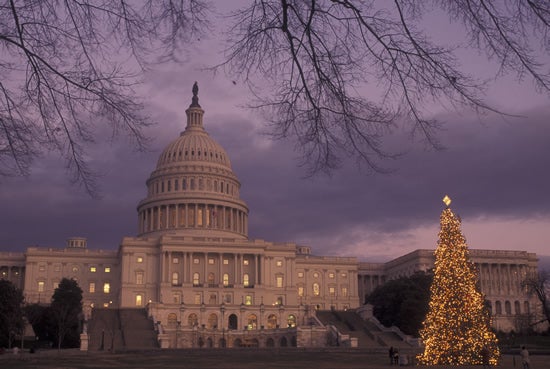Oregon cheese, IHOP pancakes, and a Hawaiian chocolate festival. Your mouth may be watering right now, but watch out—there’s a bitter aftertaste. These foodstuffs are just three of 100 items in Senator Tom Coburn’s (R–OK) Wastebook 2011, a report detailing Washington’s egregious use of $6.9 billion in taxpayer dollars this year.
That figure amounts to 13.8 million iPads, and more fruitcakes than a person could eat in one lifetime. It’s about $2 billion more than Congress appropriated to its own branch of government in fiscal year (FY) 2011. Better yet, it’s money that could have been saved and put toward reducing this year’s $1.3 trillion deficit.
Other government projects that made the list include a $742,907 U.S. Department of Agriculture (USDA) grant for “targeted sheep grazing” in Montana; a $175,587 National Institutes of Health grant to study the effect of cocaine on quail mating habits; and $111,413 to pay for American brewing experts to train Chinese breweries in the age-old craft. Congress gave the Department of Forestry $9.49 million for its International Forestry Program, though interestingly, the Obama Administration proposed eliminating the program in its FY 2012 budget.
Much was spent on duplicative government programs, despite a Government Accountability Office (GAO) report earlier this year detailing ways to reduce program overlap. More than $22 million went toward duplicative occupational safety programs within the Centers for Disease Control and Prevention. The Appalachian Regional Commission, which is charged with developing the economies of 13 states in the region, received $68 million in 2011 despite questions about its effectiveness.
And while the USDA’s live Christmas tree promotion program is on sabbatical at present, the state of Michigan received $75,000 in taxpayer money to promote the evergreen.
The merits of some of these programs can be debated, as Coburn concedes, but there is a more important question at issue: Are these spending priorities consistent with those of the federal government, as laid out in the Constitution? At a time when America’s gross debt is over $15 trillion and rising, and spending on major entitlement programs threatens to consume all taxpayer money within a few decades, can Washington afford such wasteful spending?
These are questions the American people should be asking Congress and that Congress should ask itself before it spends taxpayers’ hard-earned dollars.
To some, $6.9 billion may seem a small sum compared to the size of the debt and future obligations. However, Congress should root out such wasteful spending to demonstrate that it is capable of tackling the larger problem of rising entitlement spending. Wastebook 2011 and GAO studies on duplicative government programs offer a starting place. When it comes to reprioritizing Washington’s spending habits, simplifying the labyrinthine tax system, and transforming and strengthening entitlement programs, The Heritage Foundation’s Saving the American Dream plan is the bold way forward that Washington should embrace.






























One Reply to “No Surprise this Christmas: Washington’s Wasteful Spending Continues”